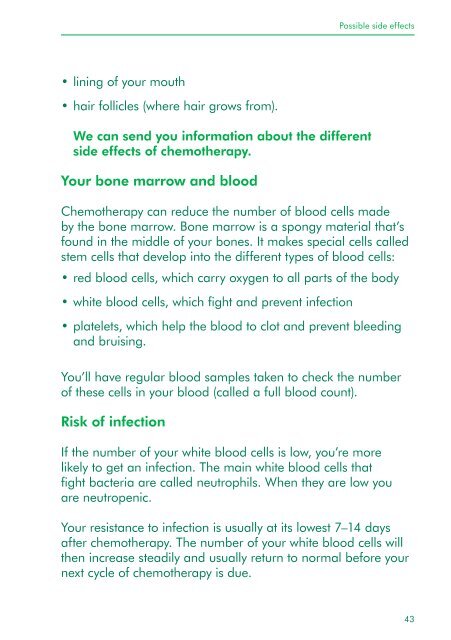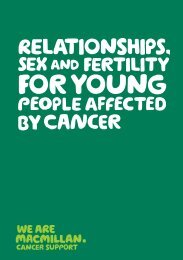Understanding chemotherapy - Macmillan Cancer
Understanding chemotherapy - Macmillan Cancer
Understanding chemotherapy - Macmillan Cancer
Create successful ePaper yourself
Turn your PDF publications into a flip-book with our unique Google optimized e-Paper software.
Possible side effects• lining of your mouth• hair follicles (where hair grows from).We can send you information about the differentside effects of <strong>chemotherapy</strong>.Your bone marrow and bloodChemotherapy can reduce the number of blood cells madeby the bone marrow. Bone marrow is a spongy material that’sfound in the middle of your bones. It makes special cells calledstem cells that develop into the different types of blood cells:• red blood cells, which carry oxygen to all parts of the body• white blood cells, which fight and prevent infection• platelets, which help the blood to clot and prevent bleedingand bruising.You’ll have regular blood samples taken to check the numberof these cells in your blood (called a full blood count).Risk of infectionIf the number of your white blood cells is low, you’re morelikely to get an infection. The main white blood cells thatfight bacteria are called neutrophils. When they are low youare neutropenic.Your resistance to infection is usually at its lowest 7–14 daysafter <strong>chemotherapy</strong>. The number of your white blood cells willthen increase steadily and usually return to normal before yournext cycle of <strong>chemotherapy</strong> is due.43
















